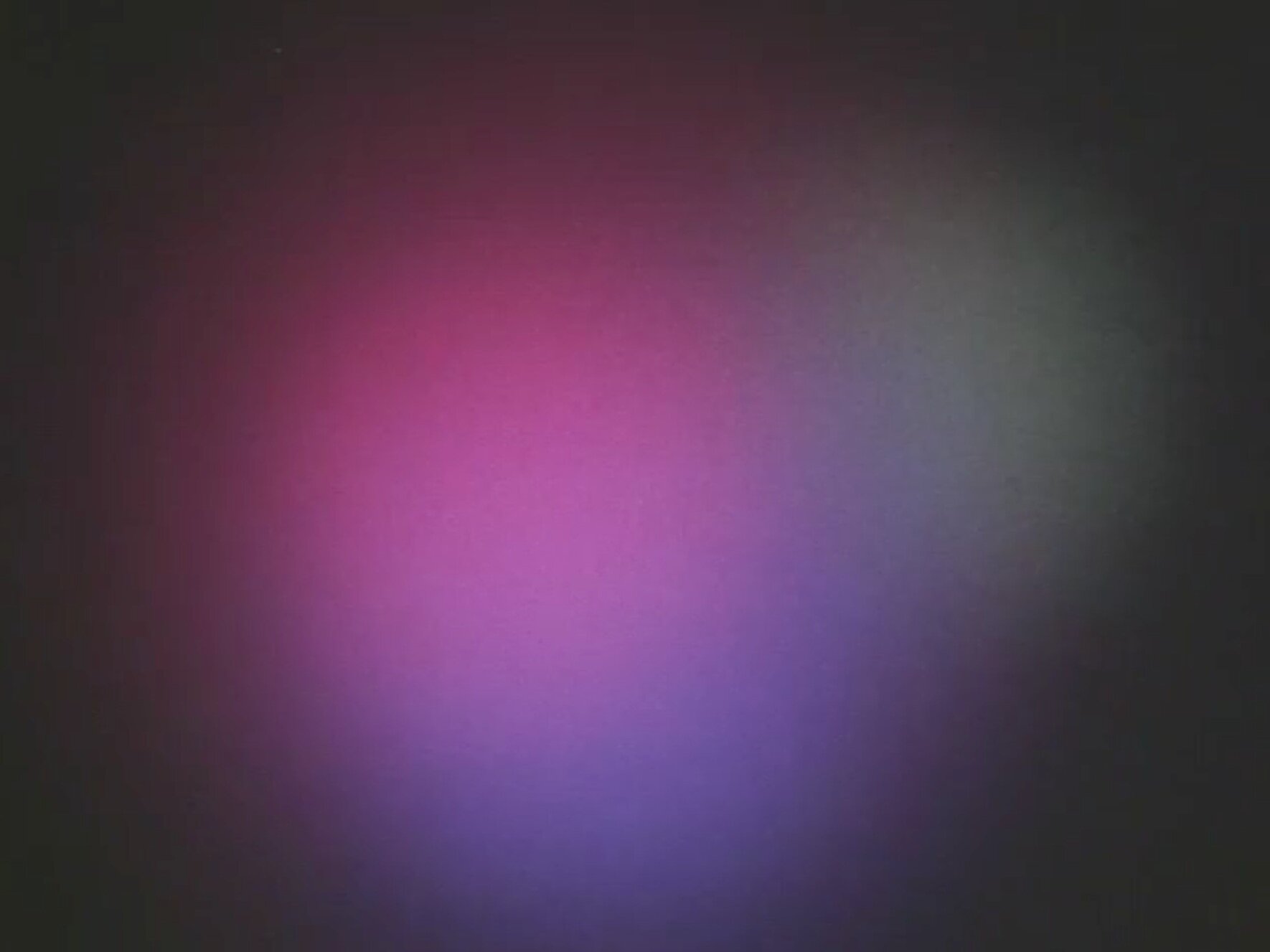Program 8
curated by Light Field
Sunday, March 15, 2020 @ 9pm
The Lab (2948 16th Street, SF, CA)
Total running time: 73 minutes
$6 - 10 sliding scale - tickets available at the door
Festival passes available for purchase here
Acts of Light
Acts of Light is a trilogy consisting of Rate of Change, Angular Momentum, and Circles of Confusion. Together they develop a study of pure color based on the notion that film is essentially change and not motion. The films build one on the other as first pure change, then relational change, and finally, irrational change. They can be seen together or as separate works.
-BB
Part 1: Rate of Change
1972 | 18 minutes | USA | color | silent
Rate of Change has no original, no frames, only slow continuously shifting colors, cycling around the perimeter of the spectrum. The changes are so slow as to be unseen, yet they alter perception of the color.
-BB
Part 2: Angular Momentum
1973 | 20 minutes | USA | color | sound
Here, by contrast [to Rate of Change], the film is richly sensuous. Again nearly continuous color changes rotate around a spectrum, but this time at varying speeds of rotation and degrees of intensity. The colors on the left start nearly white and rotate very slowly. As the film progresses the color value become darker and the speed of rotation increases until, by the end, the color is nearly black and rotates around the spectrum about once per second. On the right, the opposite occurs. It starts black and progresses nearly to white. The varying rates of rotation determine the moment combination of colors.
The film has an improvised electronic soundtrack by Richard Teitelbaum.
-BB
Part 3: Circles of Confusion
1974 | 15 minutes | USA | color | sound
In this film, circles of colored light (red, green, blue) pulsate and flicker as they move around the frame. Where they intersect, they display a variety of secondary colors. The term, circles of confusion belongs to the physics of the lenses. Here it has to do with the focus of light. Here it refers to the focus of mental and emotional energies as an irrational system for composing a film.
-BB
THE EYES EMPTY AND THE PUPILS BURNING OF RAGE AND DESIRE
2018 | 20 minutes | Spain | 16mm | color | silent
Without image. Silent. A exploration of the emulsion. Without description.
...the idea is to reduce to the minimum the elements that form the cinematograph device. To work with less elements but having a deep control over it. The limitation of using only 2 meters of processed film stock that becomes totally black is highly stimulating. I’m forced myself to control each frame with all — only — the elements of the projection, light, shutter and focus…
-LM
Luis Macías’ performance generously supported by
Bill Brand is a multi-disciplinary artist whose films, public artwork, installations and works-on-paper have exhibited worldwide in museums, galleries microcinemas and on television. His 1980 Masstransiscope, an animated mural installed in the New York City subway, is in the MTA Arts and Design permanent collection.
Bill Brand’s artwork has been featured at Museum of Modern Art, Whitney Museum, Smithsonian American Art Museum, National Gallery of Art, Anthology Film Archive and Shanghai Duolun Museum of Modern Art. He is represented by Galerie Arnaud Lefebvre, Paris.
His films have been presented at major film festivals including the Berlin Film Festival, New Directors/ New Films Festival, Tribeca Film Festival and Rotterdam Film Festival.
Luis Macías is an artist, filmmaker and image-moving composer. Focused on experimental and procedural practices of analog image. His works in Super 8,16mm, 35mm and/or video format are composed for projection, performance or installation. Films and expanded cinema pieces have been seen in prestigious film, art and music festivals as well art centers, museums and alternative spaces around the world. He’s been part of collective exhibitions and had one individual. He has collaborated with various artists, musicians and filmmakers for the creation of collective works.
Co-founder and active member of CRATER-Lab, an independent artist-run-film Lab for analog cinema.
In parallel develops theoretical and practical workshops specialized in different variants of experimental film in art centers and/or art-film schools as EQZE. Luis alternates his art work with specialized teaching in experimental cinema and the exploration of analogue moving images.


![Part 2: Angular Momentum1973 | 20 minutes | USA | color | soundHere, by contrast [to Rate of Change], the film is richly sensuous. Again nearly continuous color changes rotate around a spectrum, but this time at varying speeds of rotation and degree…](https://images.squarespace-cdn.com/content/v1/58042c925016e1b3e34a6214/1581721861159-H9PQZQSZ08W1WMYBMG2I/acts%2Bof%2Blight%2Bangular%2Bmomentum.jpg)



